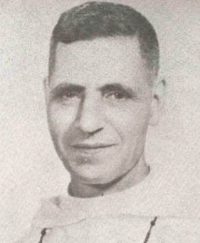They have arrived!
At 9:30 in the morning and 2:30 in the afternoon, without any siren warnings to those who after so many exercises were caught unprepared, several squadrons of American planes appeared from the East. They came at a very high altitude. Then they descended, speeding past the clusters of bursting anti-aircraft shells until they were a few hundred meters from their targets releasing their bombs and returning to their formation, some gradually, other perpendicularly depending on how they were being trailed by barking anti-aircraft guns. Sometimes they were in a chain-like formation as they plunged into a dive, or they converged in several groups over their targets. They had set fire to a number of ships anchored at the Bay, and to planes at the Nichols airfield, Grace Park and San Juan del Monte—the four cardinal points of Manila. The American planes were either long or short or small in size. The bombs were likewise small, and did not produce as much noise as did the Japanese bombs, but the vibrations caused, and the shaking of floors and walls, were greater. The hum of the engines was ominous. I could not determine the speed. Anti-aircraft batteries creating a horrifying noise were scattered all throughout the city.
Damage was great. According to the press, a hundred civilians were killed. If the figure was correct, it did not include the hundreds of Filipino workers who, together with the Japanese soldiers, were killed in the airports and in the ships at the bay. Many were killed by the cascade of anti-aircraft shells, and others by the shells which exploded upon falling back to earth. There was a literal rain of bullets and shrapnel all over the city.
In the evening, fire was blazing in the Bay where the damaged ships were burning. The light and detonation of explosives could be seen and heard for many kilometers around, and the grand finale of one of the explosions was a little fantastic and moving, like an earthquake of an alarming intensity. The explosion was heard 90 kilometers away.
